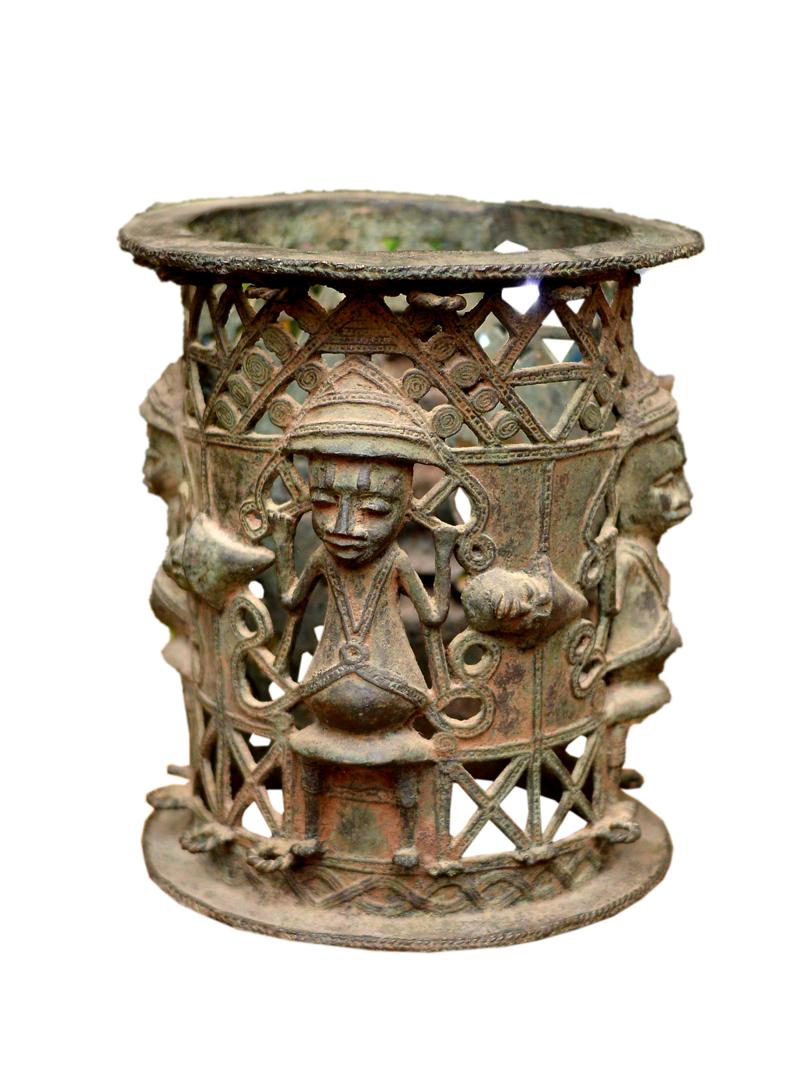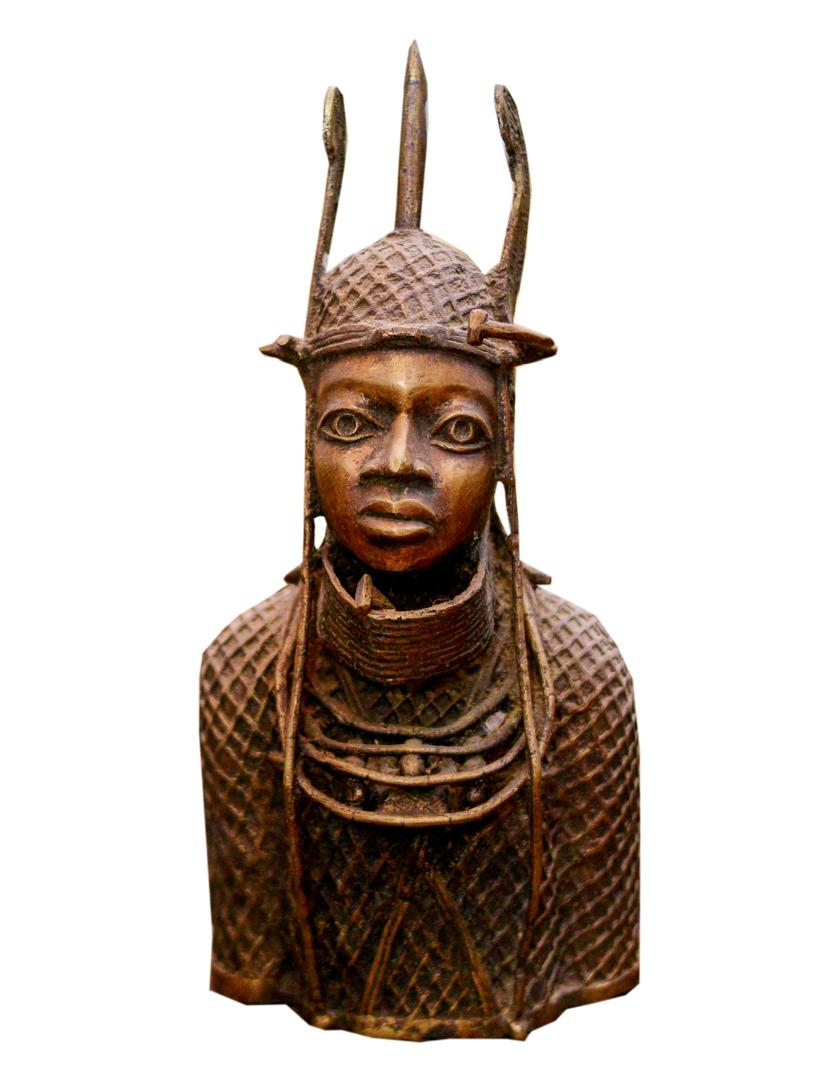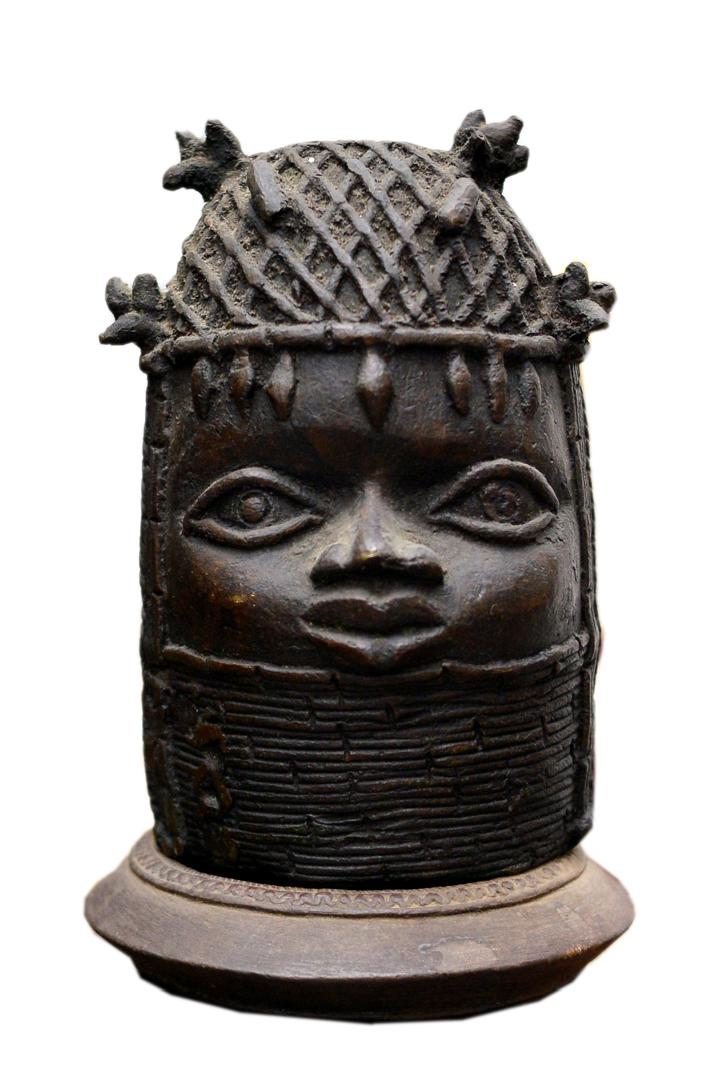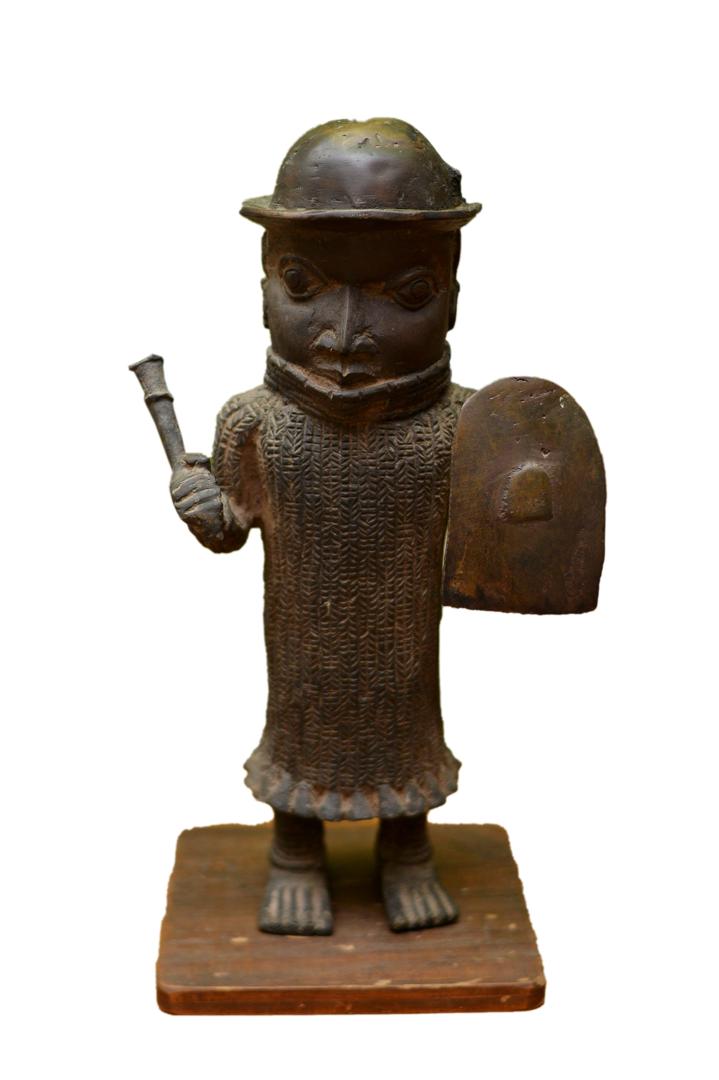- Obekpa House, 15 Mahatma Ghandi Street, Asokoro, Abuja
- ritachrisgaruba@yahoo.com
- (+234) 805 895 1790

Menu
Art At The Temple
Bini Antiquities
The artwork of the Kingdom of Benin, also known as Bini Antiquities, is renowned for its intricate craftsmanship and rich cultural significance. This art form, which flourished from the 15th century until the British punitive expedition in 1897, encompasses a variety of media including bronze, ivory, wood, and cloth. The artworks primarily served ceremonial, political, and commemorative purposes, reflecting the kingdom’s complex social structure and the divine authority of its rulers.
Key Features of Benin Art
Benin Bronzes
The term “Benin Bronzes” refers to a collection of thousands of metal plaques and sculptures that adorned the royal palace. These artworks, often made from brass, depict various scenes including historical battles, dignitaries in ceremonial attire, and significant cultural motifs. The plaques are characterized by their intricate designs, which often include the *ebe-ame* or “river leaf” pattern, used in healing rites associated with Olokun, the god of the sea.
Royal Regalia
The regalia of the Oba (king) is a significant aspect of Benin art. The Oba’s attire, adorned with coral crowns, necklaces, and aprons, symbolizes his divine right to rule. These items are not merely ornamental; they are imbued with supernatural energy and signify the Oba’s connection to the spiritual world. The elaborate regalia also serves to reinforce the hierarchy within the kingdom, as the weight of the attire necessitates the assistance of attendants.
Leopard Imagery
Leopards are prominent in Benin art, symbolizing the strength and cunning of the Oba. This imagery is not only decorative but also serves as a metaphor for the ruler’s military prowess. Artifacts such as boxes shaped like leopard heads were used in royal ceremonies, further emphasizing the connection between the Oba and this powerful animal.
Sculpture and Altar Pieces
Sculptures in Benin art often served as ancestral altars or were used in courtly ceremonies. These pieces include large brass rings depicting macabre scenes, emphasizing the kingdom’s beliefs in the afterlife and ancestral worship. The sculptures are typically cast in high relief, allowing for a three-dimensional representation of figures and scenes.
Cultural Narratives
Benin art serves as a narrative tool, chronicling the history and achievements of the kingdom. The artworks often depict events and figures significant to Benin’s past, functioning as a form of visual storytelling. This aspect of Benin art is particularly important given the lack of a written language in the kingdom, making these artworks vital for preserving cultural memory.
Techniques and Materials
The artistry of Benin is marked by a high level of technical skill, particularly in metalworking. The bronzes are created using a lost-wax casting technique, allowing for detailed and intricate designs. Other materials, such as ivory and wood, are also used, showcasing the versatility and creativity of Benin artisans
Bini antiquities the Kings armband.


Antiquities Bini King in Bronze medium. Private collection of Enewa R Chris-Garuba.
Antiquities. Bini King in bronze. Private collection of Enewa R Chris-Garuba.


Antiquities. Miniature form 6”. Bini king. Often worn as part of the kings attire. Private Collection Enewa R Chris-Garuba.
Queen Iden N’Ukpokho, Queen Iden, Great Woman. Bini. Bronze. Private collection of Enewa R Chris-Garuba.


Queen Iden N’Ukpokho. Private Collection Enewa R Chris-Garuba.
Queen Idia, N’Iyesigie, Mother of Oba Esighie. Private collection of Enewa R Chris-Garuba.


Modern Bini works in polished bronze from Igun Street Bronze works mounted by Julius Berger on redwood mahogany.
Oyinbo soldier in chain mail dress and metal hat. Bini bronze antiquity. Private collection Enewa Rita Chris-Garuba.

Useful Links
Get In Touch
Don’t hesitate with your future!
Give Us A Call Today!
Copyright 2024 © Temple Chambers (Barristers & Solicitors). All Rights Reserved.
